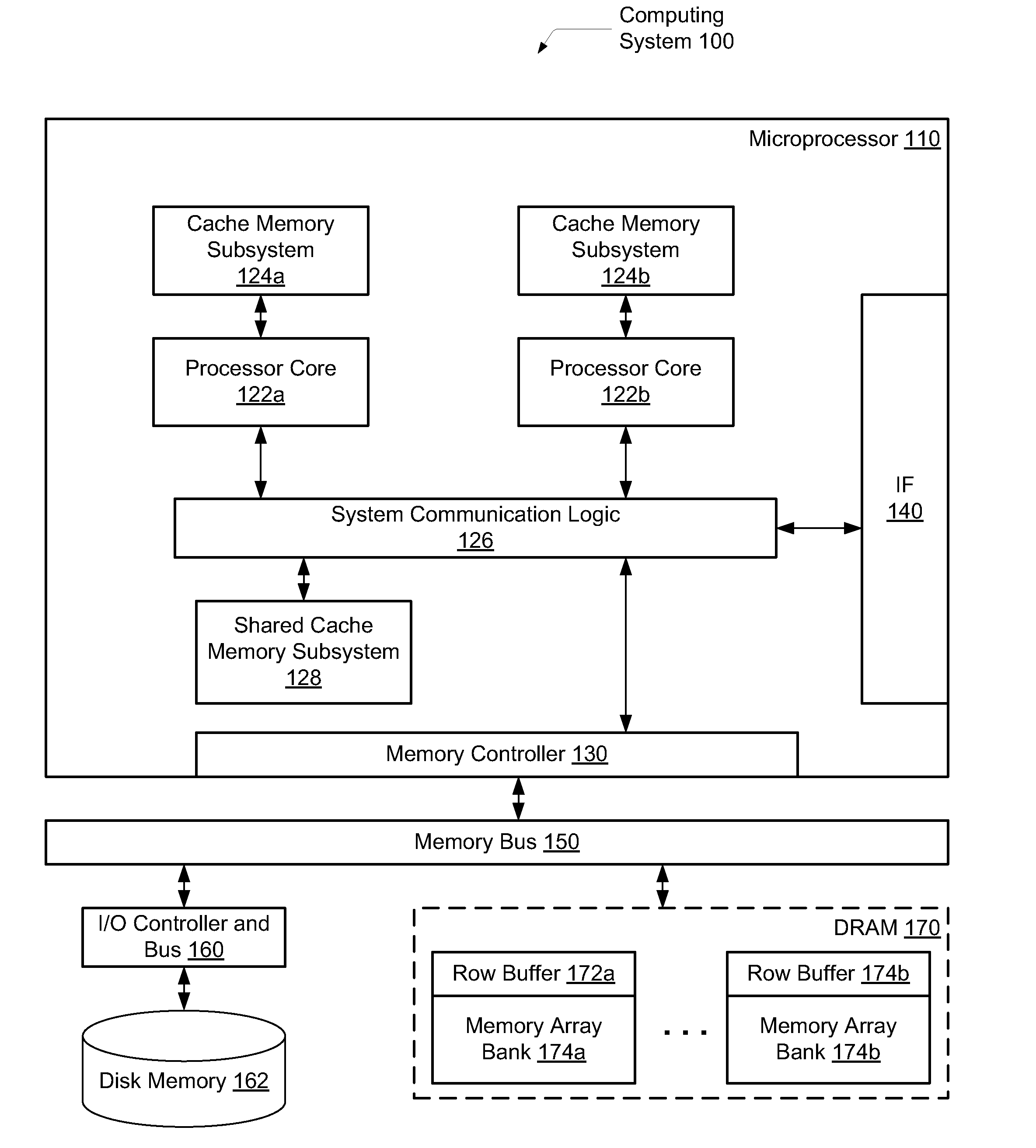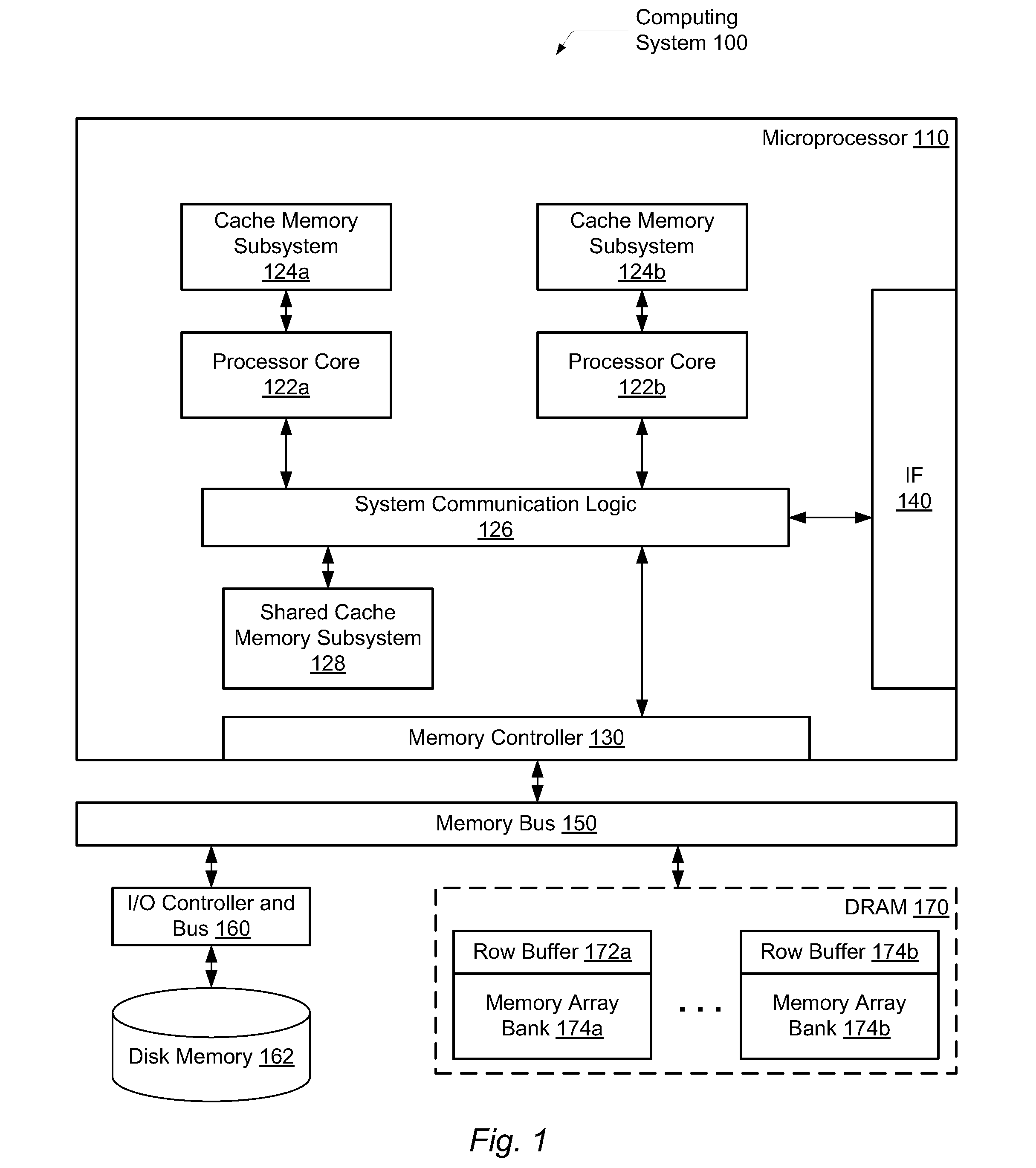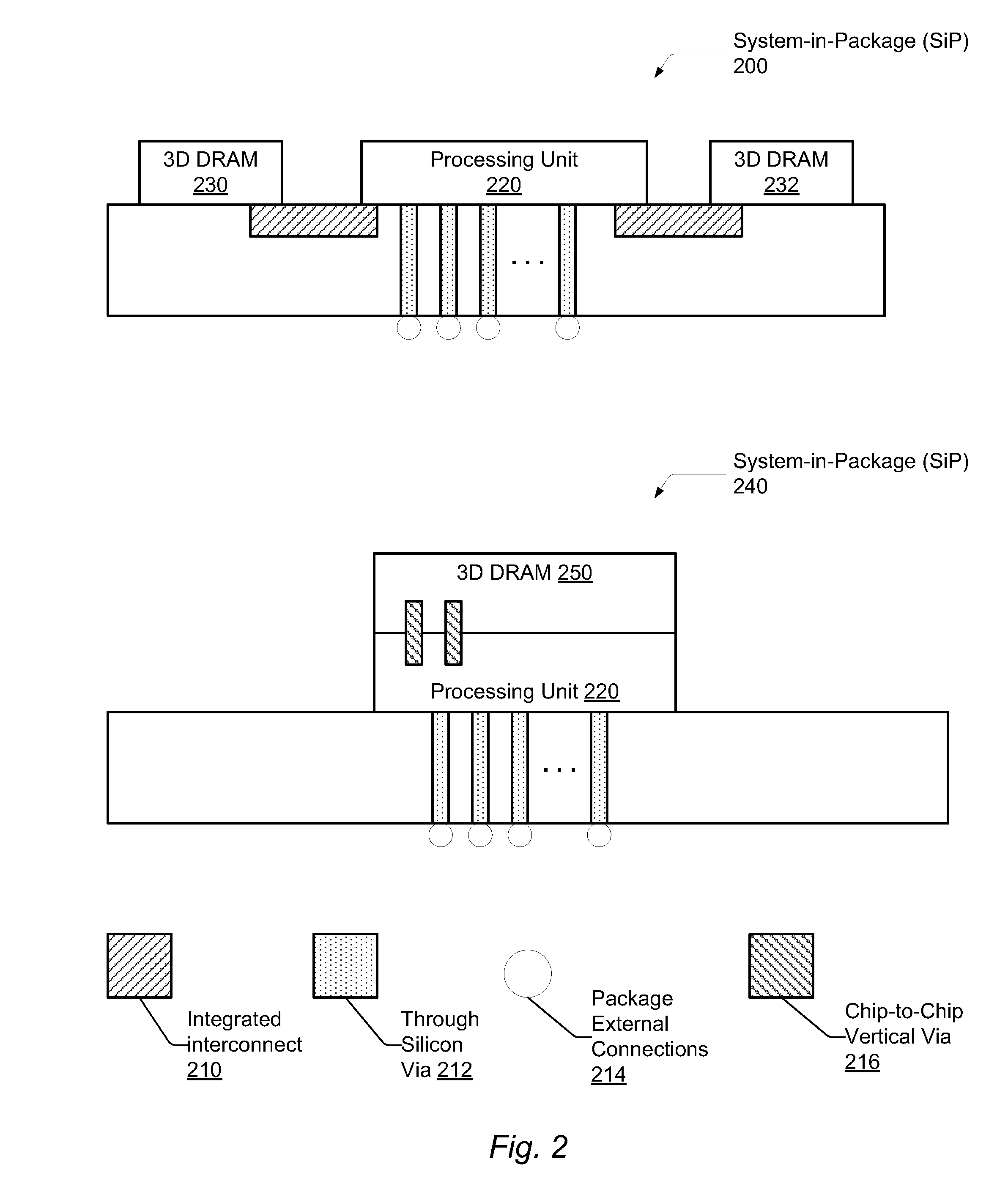Dram cache with tags and data jointly stored in physical rows
a cache and physical row technology, applied in the field of computing systems, can solve the problems of limiting potential benefits, increasing the delay of interconnection per unit length, and high electrical impedance between individual chips, so as to reduce latency and power consumption
- Summary
- Abstract
- Description
- Claims
- Application Information
AI Technical Summary
Benefits of technology
Problems solved by technology
Method used
Image
Examples
Embodiment Construction
[0010]Systems and methods for efficient cache data access in a large row-based memory of a computing system are contemplated.
[0011]In one embodiment, a computing system includes a processing unit and an integrated dynamic random access memory (DRAM). Examples of the processing unit include a general-purpose microprocessor, a graphics processing unit (GPU), an accelerated processing unit (APU), and so forth. The integrated DRAM may be a three-dimensional (3D) DRAM and may be included in a System-in-Package (SiP) with the processing unit. The processing unit may utilize the 3D DRAM as a cache.
[0012]In various embodiments, the 3D DRAM may store both a tag array and a data array. Each row of the multiple rows in the memory array banks of the 3D DRAM may store one or more cache tags and one or more corresponding cache lines indicated by the one or more cache tags. In response to receiving a memory request from the processing unit, the 3D DRAM may perform a memory access according to the ...
PUM
 Login to View More
Login to View More Abstract
Description
Claims
Application Information
 Login to View More
Login to View More - R&D
- Intellectual Property
- Life Sciences
- Materials
- Tech Scout
- Unparalleled Data Quality
- Higher Quality Content
- 60% Fewer Hallucinations
Browse by: Latest US Patents, China's latest patents, Technical Efficacy Thesaurus, Application Domain, Technology Topic, Popular Technical Reports.
© 2025 PatSnap. All rights reserved.Legal|Privacy policy|Modern Slavery Act Transparency Statement|Sitemap|About US| Contact US: help@patsnap.com



